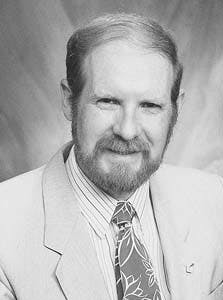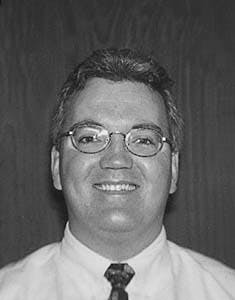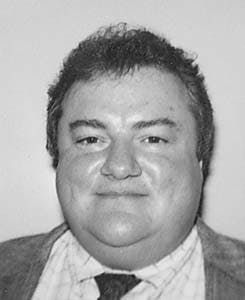Blend-control system all but eliminates reblends for Canadian refiner
Peter J. Vermeer, Clifford C. PedersenSunoco Inc. commissioned a product-blending optimization system at its Sarnia, Ont., refinery. The overall objective of such systems is to optimize the external material flow and internal production requirements to reduce quality giveaway and product reblends.
Sunoco Inc.
Sarnia, Ont.William M. Canney, John S. Ayala
Aspen Technology Inc.
Houston
Sunoco estimates the benefits of the completed blending optimization system to be $0.50/cu m ($0.08/bbl). Achieving these savings requires strategic interweaving of refinery-wide planning, blend and product scheduling, and single-blend optimization. (All cost figures are expressed in Canadian dollars.)
An important technical accomplishment of this work is the deployment of a real-time blend optimizer using Aspen Technology Inc.'s DMC multivariable, model-predictive control technology. This application incorporates the first-ever use of AspenTech's variable model gain in blend calculations.
Background
Sunoco's Sarnia refinery is located at the outlet of Lake Huron in southwestern Ontario. The refinery processes 11,000 cu m/day (70,000 b/d) of western Canadian and synthetic crudes, and produces seasonal variations of four major grades of gasolines, along with diesel, fuel oils, and merchant chemicals.The scope of the advanced control and optimization work described in this article includes only gasoline blending. Other refinery products are to be included in future projects.
Gasoline is produced at the refinery by blending 12 components to meet 20 standard product specifications. Of these specifications, 8 are measured or calculated on-line in real time; the remaining 12 are determined by laboratory analysis. All blends are produced to product tanks for shipment by pipeline or via marine terminal.
Project objectives
Sunoco began investigating improved tools for blending optimization in 1993. Motivation for this effort was the recognition that, while the refinery was realizing significant economic benefits from advanced process control (APC) and optimization, these benefits could easily be lost by suboptimal product blending.The economic benefits from optimization of product blending cannot be achieved without a change in the blend component pool or refinery products. One of the following changes must occur:
- The component pool is altered to favor the use of less expensive components (e.g., C9-200 vs. toluene/xylenes).
- The product pool is altered toward increased production of more profitable grades of products (e.g., ultra vs. regular gasoline).
- The unit production specifications are adjusted to produce components at a decreased production cost, and presumably a lower quality (e.g., a reformate RON of 94 vs. 95).
- The purchase of blend additives or components (e.g., MTBE) is reduced, or the sale of marketable components (e.g., toluene/xylenes) is increased.
Any purported benefits from blending optimization should be traceable to one of the aforementioned changes observed over several blends and refinery planning periods.
The goals for the blending optimization work at Sarnia were:
- Zero demurrage
- Zero property giveaway
- Zero blend corrections
- Strategic component use
- Optimum component inventory.
Blend optimization
Giveaway is the difference between the true property of a blend and the specification limit for that property. All blends should be produced on time, within property specifications, and with minimal giveaway.For a single blend, property giveaway can be classified as either constrained or unconstrained. Constrained property giveaway is giveaway from property variables that constrain the regulation of the current blend. At Sunoco, these typically include (R+M)/2, vapor pressure, and 50% distillation point.
Unconstrained property giveaway is giveaway from property variables that do not constrain the regulation of the current blend. MON is an unconstrained property for Sunoco.
A single-blend optimizer can be used to eliminate constrained property giveaway, but refinery-wide planning and multiblend optimization are necessary to minimize unconstrained giveaway.
The authors define strategic component use as the optimal use of components based on a strategy determined by refinery-wide optimization and multiperiod inventory optimization. The strategy involves detailing the combination of components that should be used preferentially for blend corrections. Strategic component use by a single-blend controller involves consistency with objectives and strategy determined by a higher-level optimization.
In commercial applications, inaccurate blend-property models and inventory constraints necessitate the use of a real-time, multiblend optimization system in concert with a refinery-wide plan. But specification of only an initial blend recipe does not define the strategy that should be used to correct an individual blend when measured property values do not match those predicted by the multiblend optimization. Specification of cost factors and relevant inventory constraints are necessary to define the required strategy.
An off-line, multiblend optimization system, in conjunction with an on-line, real-time single-blend optimizer, can be used for nominal corrections to the blend, provided the strategy determined by the multiblend optimizer can be communicated effectively.
This arrangement simplifies integration with real-time blend regulation. It is the method preferred by the authors and the one discussed in this article.
Strategic component use
The cost analysis shown in (Table 1 [33,205]) illustrates the concept of strategic component use. Column A details a typical blend specification provided by a blend scheduler to a blend operator. When the operator initiates a blend with this recipe, he or she observes measured properties and the indicated giveaway.An on-line property controller is used to eliminate giveaway and correct the blend (Column B). A cost savings is achieved from this correction, but the production or purchase costs of the components were not explicitly considered in developing the correction.
When the cost differences between components are considered, the blend can be strategically corrected (Column C) to achieve additional savings. This correction is based on cost and property contribution differences (or possibly property per-unit-cost differences) between blend component streams. A savings beyond giveaway reduction (a strategic savings) is obtained by correcting the blend in conformance with a refinery-wide plan or multiblend optimization view of the economic value of each component.
Detailed analysis may be required to compute cost values for each component. Cost factors are a function of time, as it relates to producing a monthly or weekly refinery-wide plan, and as it relates to inventory constraints, volumes of components used, and the strategic need for particular components at critical points in the blending schedule.
The strategic corrections to be applied to an individual blend are communicated using component cost factors calculated from a refinery-wide production plan, and component adjustment limits based on projected inventory constraints.
Optimum component and product inventory is achieved when inventory levels fluctuate to allow the production of a series of blends using economically optimal components. The optimal combination of components determined by a refinery-wide production plan often is not achievable because of constraints in component and product inventories.
To mitigate the impact of such constraints, it may be necessary to accumulate or deplete the inventory of certain components based on future blending requirements. It is important to recognize that this fluctuation is consistent with optimizing component and product inventory, as opposed to strictly minimizing component inventory. Minimizing component inventory, however, is important as a secondary economic objective.
Property estimation provides the basis for all blend correction and optimization calculations. The need to correct and optimize blends in real time is directly traceable to inaccurate predictions from blend-property models. This inaccuracy is caused by model error and quality disturbances in the component streams.
Accurate property estimates also can be used for validating on-line blend measurements and for proactively identifying instrumentation problems.
Tools, technology
Based on Sunoco's objectives, three major sources of economic loss were identified for gasoline blending: giveaway (constrained and unconstrained), inventory constraints, and suboptimal component use.The inherent reasons for these loss sources are:
- Failure to control individual blends
- Failure to optimize individual and scheduled series of blends
- Variation in component quality
- Inaccurate prediction by models
- Failure to proactively identify and alleviate inventory constraints.
- A single-blend property controller and optimizer
- A real-time blend-property estimator
- A multiblend, component-inventory optimization system.
AspenTech's Blend-QC, incorporating DMC, was selected for single-blend property control and optimization. DMC technology had been successfully applied in other applications in the Sarnia refinery.1
The DMC controller includes an embedded linear program (LP) cost optimization for determining economically optimal blend corrections (Fig. 2 [23,850 bytes]). The LP cost optimization incorporates real-time process feedback and is performed within each DMC control cycle (every 4 min in this case). The LP also handles multivariable constraints, thus allowing optimized blending when the number of property specifications exceeds the number of component streams available for manipulation.
Interactions and dynamic-response relationships between component flows and measured properties are explicitly considered. Adjustments for the blend are calculated based on adjusting all available component streams simultaneously, and with a timing consistent with projected blend disturbances and measurement interactions.2
DMC compensates for blend process dynamics by utilizing a dynamic-response model to calculate the expected response of blend property measurements. The time-response model considers analyzer sample times, measurement time delays, flow loop dynamics, and analyzer response dynamics when calculating optimal blend adjustments. This allows for blend regulation at the frequency of the fastest property-measurement feedback rather than the slowest.
Blend-QC also includes Dynamic Property Estimator (DPE) software to calculate estimates of measured and unmeasured blend properties. These estimates can be used for control and optimization of properties not available by on-line measurement, and to validate on-line measurements with a sophistication not normally required for APC applications. DPE includes signal status, calibration monitoring, spike detection, signal drift, and prediction-error monitoring.
The DMC control engine used in Blend-QC incorporates variable process-model gains. The gain relationship (change in property per unit change in component) between controlled properties and manipulated components is adjusted on-line in real time.
DPE uses linear or nonlinear property calculations or modeling relationships to calculate gain estimates for the DMC controller before each control cycle. These gain estimates incorporate feedback of property measurements and updates of component property data.
This variable gain capability provides for tight regulation of the blend despite poor initial blend recipes, line-up changes by the operator, or large component disturbances. The Sunoco Sarnia project is the first application of this technology.
Project deployment
In late 1993, after reviewing the available products, Sunoco contracted DMC Corp. to jointly develop a blend control and optimization application within an APC framework. (DMC Corp. was acquired by AspenTech in January 1996.) This effort resulted in a gasoline blending application based on the DMC 5.02 controller.The control equipment used at that time included a Foxboro Blendtrol system for blend ratio control, a Core Labs Comoc II computer, and an Intellution FIX DMACS control system. The application ran on a Digital Equipment Corp. VAXstation Model 4090 computer interfaced to the Intellution FIX DMACS system.
The application was tested on 11 blends. It was successful as a proof-of-concept, but instrumentation reliability and interface issues forced a 1-year delay in further testing.
Work on the application began again in February 1995, after the instrumentation and interface issues had been largely resolved. The blend-control methodology was reformulated, and the application was recommissioned in March 1995.
Between March and October of that year, the gasoline blend controller was used on 98% of blends, and proved robust and reliable. In October, an off sites reinstrumentation project moved control of the blend header to the Honeywell TDC-3000 system. Honeywell Blend Ratio Control (BRC) and Core Labs Integrated Octane Analysis System were installed to provide, respectively, blend ratio and knock-engine control.
Options for porting the gasoline blending application to a new platform were investigated. One option was to simply port the existing application, with its highly customized code, to the new hardware and software platform. Sunoco chose a second option-to work with DMC Corp. to field test its new Blend-QC product, which included a DMC 5.3 controller and a DPE module.
The new application was ready for commissioning in March 1996, but issues with the blend ratio control software caused a delay until June. The application was commissioned and turned over to operations in early July. At the time of this writing, Blend-QC has been used on more than 97% of blends with satisfactory results.
During the project, numerous issues were addressed to improve the projects's success. The first was instrumentation.
Instrument requirements for closed-loop blending applications are greater than for open-loop applications. Analyzer reliability is crucial for closed-loop application, and requires significant attention.
The performance of Sunoco's blend-header flow controllers during winter was a problem. Certification with on-line instruments is important for control of blend properties. Blend-QC brings the property average exactly to specification by the end of the blend (to the second decimal place), but a lab analysis is used to certify the property.
At the Sarnia refinery, octanes are certified on-line, but vapor pressure and distillation are certified by the lab analysis, even though on-line analyzers are available. To achieve maximum benefits from Blend-QC, on-line certification of all properties would be required.
A second issue was interfacing with the Honeywell BRC. BRC ratio control includes blend starting and stopping, average property calculation, analyzer validation, alarming, and reporting. Blend-QC uses the current property value, status, and averages from BRC and writes new recipes to BRC for implementation. BRC functionality, for the most part, is left in place.
Minor TDC programming was required to provide Blend-QC with loop status and antiwindup status data from the TDC-3000 flow loops. (Antiwindup protection is a control method used to communicate to upper-level supervisory controllers that a particular controller cannot move in a given direction. For example, if a proportional integral derivative [PID] controller has its valve 100% open, then antiwindup communicates to the DMC controller that increasing the PID's setpoint will have no effect; the valve cannot be opened further.)
A third issue was turnover of Sunoco's process control/applications engineers. Three different engineers have been involved since initiation of the project. Since the blending technology used was identical to the controller technology used in the process units, training was limited to the blending area only.
A fourth important issue was training of the off sites operators. This application was the first advanced control application in the off sites area.
The blend operators were originally trained on Blend-QC at the console during blending operations, followed by a classroom session. Once Blend-QC was ported to the TDC-3000/BRC, the off sites operators were retrained only at the console.
The Blend-QC displays were native graphics for the control system in use. For the TDC-3000, three displays were designed to facilitate the use of Blend-QC with the BRC displays, and a single, main display was used most of the time (Fig. 3 [37,981 bytes]).
A final aspect in the project deployment has been the use of component cost values. The component cost values utilized by Blend-QC are derived from the refinery monthly production plan. These cost factors are reflective of the refinery's current economics and production objectives, and are adjusted with each new plan via a process database application.
Results
The successful implementation of dynamic blend optimization has had several positive results for Sunoco:- The estimated benefit for the completed work is more than $0.50/cu m ($0.08/bbl) of gasoline produced. The primary sources of this benefit is giveaway reductions and the use of lower-value blend components.
- Constrained property giveaway has been reduced to well within the statistical accuracy of the analyzers. Blend-QC performance on a typical blend is such that the property average is equal to the batch target to the fourth significant figure.
- Inventories of expensive components have accumulated, and inventories of less expensive components are typically at near-minimum levels. Component cost values are updated monthly, and component trade offs and adjustments are based on current cost factors from the refinery-wide production plan.
- The number of reblends has been reduced from about 30% before the project, when limited property measurements were used, to 12% following the instrumentation upgrade, to less than 1% using Blend-QC regulation.
- All component streams in a blend can be adjusted and used for blend corrections because of the use of multivariable, model-predictive control technology. (Prior to the Blend-QC, the operator used two, or at most three, components to trim the blend.)
- Regulation of the blend is now continuous and the application provides batch target control, with or without accelerated heel correction. (Every 4 min, Blend-QC can adjust the component recipe for property control or cost optimization. While these adjustments generally become extremely small as the blend progresses, the blend operators now monitor component recipes as indicators of component quality changes.)
- There is increased focus on reliable instrumentation in the blending area.
- The blend operators have changed the blend start-up procedure so that Blend-QC is brought on-line as quickly as possible, so that it can begin regulation as close as possible to the beginning of the blend.
- Economics are considered when determining blend trim adjustments. (Even when all properties are within specification and there is no giveaway, Blend-QC may still adjust the blend to improve economics.)
Operator acceptance of this application has been very high. They have appreciated the attention and tools in the off sites that make their job easier, and have used Blend-QC as part of their standard blending procedures.
Another result has been the realization that technical deployment of Blend-QC can be fast (on the order of 13 weeks). However, resolution of the issues necessary for a successful closed-loop blending application can be slow. Often, many different groups in the refinery need to be involved and the nature and scope of the work can take more than a year to resolve.
The final benefit is the flexibility of the application. On July 19, 1996, lightning struck Tank No. 11, which held raffinate, a gasoline blending component. A major fire ensued and the tank was destroyed. As a result, raffinate and cat gasoline were preblended into one tank.
Lab analyses were performed on the combined stream. Blend-QC was reconfigured (component properties were changed), and minimal effort was required to handle this situation.
Integration issues
The Sarnia blend-control system communicates to the Blend-QC controller component cost information produced by the plan. This provides regulation and optimization of individual blends, consistent with the strategic objectives (not necessarily the recipes) of the plan.Certain key issues need to be considered when evaluating this arrangement. Most notably, the bases for these calculations are achieving the production plan and using accurate cost factors for optimization.
The refinery has made significant investments to ensure the goals are achieved, including installing more than 30 DMC control and APC applications, and three DMO real-time optimization systems. Again, the objectives of these systems are not to strictly meet the targets of the refinery-wide plan, but to strategically exceed it wherever possible. Additional DMC control applications and DMO real-time optimization systems continue to be developed in the refinery to ensure that these objectives are met on all process units.
The determination of cost factors, and the related issues of yield tracking and production monitoring, are areas of continued discussion and development at the refinery. Certain optimizations do not involve cost trade offs and are not cost sensitive (e.g., minimizing alkylate in unleaded gasoline or maximizing butane in all blends). Other optimizations involve cost trade offs between components (e.g., cat gasoline vs. raffinate, toluene vs. C9).
Clearly, Blend-QC produces blend corrections that favor the use of low-cost components, while higher-cost components accumulate in inventory. A refinement of this work is to ensure that the most accurate cost information available is used, so that benefits are maximized.
A key issue for ensuring strategic consistency is the consistency of the property models used in the various planning, optimization, and control systems in the refinery (Fig. 4 [20,938 bytes]). It is these models, along with component cost factors, that determine the component trade offs that should be made when optimizing a blend. These models should be consistent structurally and numerically (values of equation parameters).
Model corrections based on feedback should be communicated to the optimization and planning levels to allow more-accurate plans to be generated. Property prediction is recognized at the Sarnia refinery as the basis for all blend control, optimization, and planning, and subsequently as a core value necessary for maximizing economic benefits.
The strategic savings illustrated by this case history demonstrate that refiners can exploit differences in component production costs (or market values) to produce cheaper blends of gasolines. Additionally, utilizing these cost differences to determine optimal, real-time recipe adjustments makes these savings possible, despite errors in the property models used to produce the refinery production plan.
A review of the blending optimization cycle, shown in (Fig. 5 [29,444 bytes]), indicates that process feedback is provided at each step in the optimization cycle. The multiblend optimizer should provide inventory projections that detail when a particular component inventory constraint will become active, or when a pool property problem exists.
The more accurate this estimation, and the further it is in the future, the more opportunity the blend scheduler has to alleviate the problem. This may include:
- Renegotiating the delivery time or volume of a blend
- Purchasing or selling components
- Renegotiating a particular quality constraint
- Requesting a change to internal production volumes or component qualities.
- Profit per volume of gasoline produced has increased.
- All blends are produced at octane and Rvp constraints (no constrained giveaway).
- Butane usage has increased, as has usage of other low-cost, high-value components.
- The inventory of low-cost components is typically very low, and the inventory of the more expensive components tends to accumulate.
- The number of blend corrections has been significantly reduced, with a correlated improvement in on-time delivery. This has occurred even though component inventory constraints have forced more just-in-time blending.
Future plans
Future plans for Sunoco gasoline blending call for increased certification with the on-line analyzers. Work is in progress for Rvp certification. Plans also call for distillation certification with the on-line gas chromatograph.Another area for future work is pipeline blending. Currently, all gasoline blending is done to product tanks.
Another important goal is improved integration of Blend-QC with the planning, scheduling, and multiblend scheduling/optimization functions. The refinery is currently involved in a 3-year project to install a refinery information management system (RIMS).
One of 12 subprojects of the RIMS work is oil planning and scheduling (OP&S). The scope of the OP&S project is to evaluate and deploy new planning, scheduling, and multiblend tools for the refinery. It is hoped that multiblend scheduling and optimization will reduce unconstrained property giveaway.
Acknowledgment
The authors wish to acknowledge the contributions of: Michelle Leonard (Sunoco), who performed much of the initial work on this project; and Ingo Vogt, off sites area manager, and his excellent team of operators and technicians, who provided many constructive comments.References
- Pedersen, C.C., Mudt D.R., Bailey K., and Ayala J. S., "Optimize Hydrocracker Product Profits with CLRTO," Fuel, January 1996.
- Hoffman, D.W., and Johnston, C.R., "Model Predictive Control: Future Requirements and Trends," Instrument Society of America International Conference, 1993, 93-369.
The Authors
Peter J. Vermeer is senior applications engineer in the process control department at the Sunoco Inc. refinery at Sarnia, Ont. For the past 7 years, he has implemented and maintained multivariable predictive controllers and a real-time optimizer on a hydrocracking unit and in gasoline blending. From 1986 to 1990, Vermeer worked for Polysar Ltd. in Sarnia as a computer control engineer implementing process control applications in rubber and styrene units. From 1982 to 1984, he worked for Petro-Canada Inc. in Empress, Alta., as a process engineer and project engineer. He has a BS in chemical engineering and an MS in process control, both from the University of Alberta. Vermeer is a registered professional engineer in Alberta.
Clifford C. Pedersen is project manager, process control at Sunoco's Sarnia refinery. During the past 12 years, he has been accountable for computer control applications, real-time process optimization, and major instrumentation projects. From 1976 to 1984, Pedersen was a staff engineer for Shell Canada Products Ltd. in Toronto and Sarnia, where he supervised systems development in the process computer applications department. Before that, he worked for Imperial Oil Enterprises Ltd. in Sarnia and Montreal as an applications engineer and a project engineer. Pedersen has a BS in chemical engineering from the University of Alberta and a masters degree in systems design from the University of Waterloo. He is a member of the Canadian Society for Chemical Engineering and the Instrument Society of America. He is a registered professional engineer in Ontario.
William M. Canney is a senior consultant with the advanced control and optimization division of Aspen Technology Inc., Houston, where he contributes to the development and application of multivariable control and optimization technology. Canney has applied advanced control technology to a diverse set of commodity and specialty chemical applications, including gasoline blending, cryogenic air separation, batch reactors, reactive distillation, furnace control, and other processes. He has numerous publications and four patents describing these efforts. Before joining AspenTech, he worked for Union Carbide Corp., Praxair Inc., and most recently Dynamic Matrix Control Corp. (DMCC), before it was purchased by AspenTech. Canney has more than 12 years of experience in the dynamic simulation of chemical processes, and in the development, application, and troubleshooting of multivariable control and optimization applications. He is a graduate of the University of Wisconsin at Madison.
John S. Ayala is the senior vice-president of AspenTech's advanced control and optimization division in Houston. He serves as a consultant for all phases of constrained multivariable control and closed-loop optimization applications and technology development. Before joining AspenTech, Ayala was with DMCC for 9 years, during which he worked on the development of closed-loop, real-time optimization technology, and directed and implemented several control and optimization applications in refining and petrochemical facilities. He also led several large scale advanced control and optimization projects during his 9 years with Shell Oil Co. before joining DMCC. Ayala also worked for the M.W. Kellogg Co. in the advanced control and optimization area. He has more than 19 years of process control and optimization experience. He has BS and MS degrees in chemical engineering from the Massachusetts Institute of Technology.
Copyright 1997 Oil & Gas Journal. All Rights Reserved.




